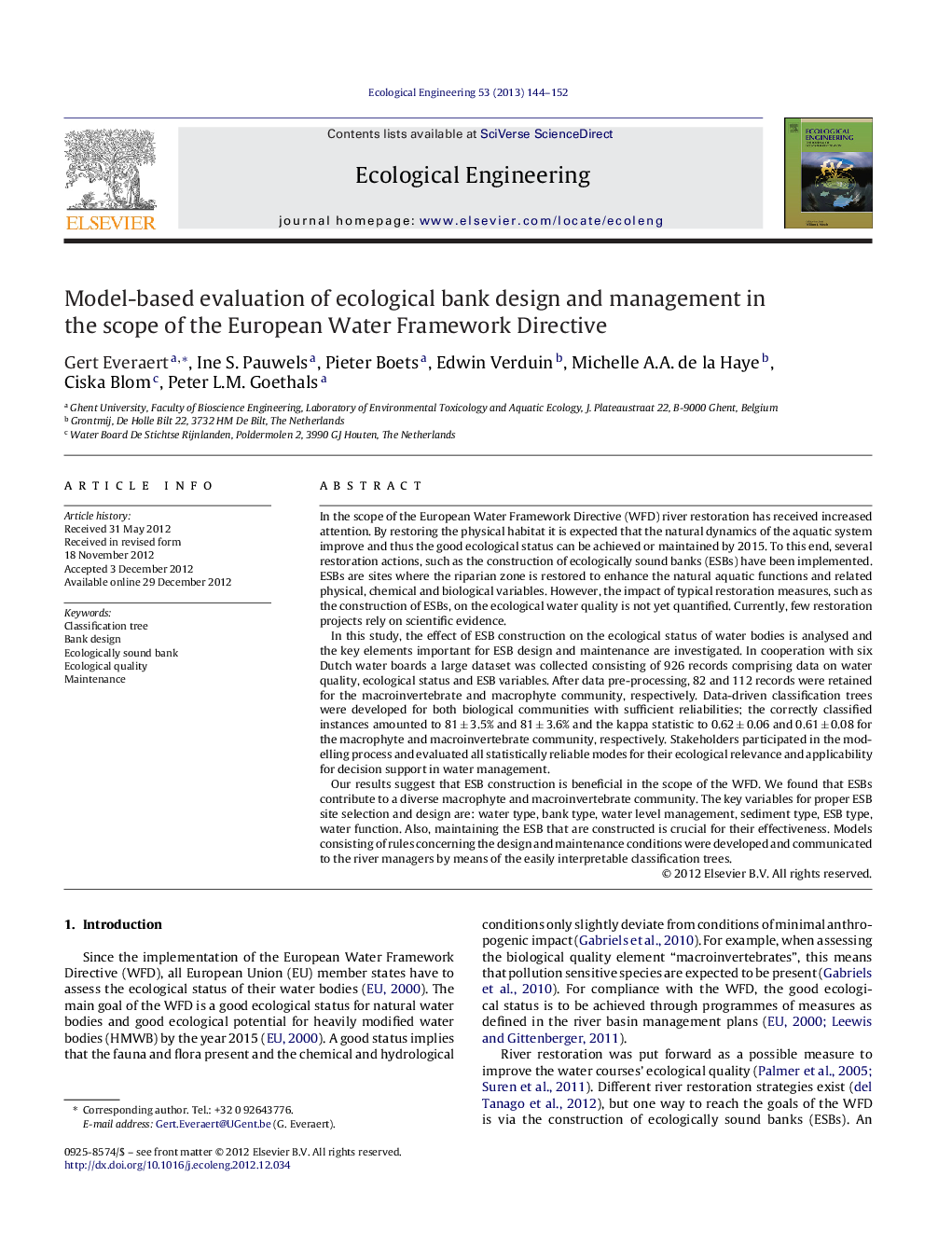| Article ID | Journal | Published Year | Pages | File Type |
|---|---|---|---|---|
| 4389678 | Ecological Engineering | 2013 | 9 Pages |
In the scope of the European Water Framework Directive (WFD) river restoration has received increased attention. By restoring the physical habitat it is expected that the natural dynamics of the aquatic system improve and thus the good ecological status can be achieved or maintained by 2015. To this end, several restoration actions, such as the construction of ecologically sound banks (ESBs) have been implemented. ESBs are sites where the riparian zone is restored to enhance the natural aquatic functions and related physical, chemical and biological variables. However, the impact of typical restoration measures, such as the construction of ESBs, on the ecological water quality is not yet quantified. Currently, few restoration projects rely on scientific evidence.In this study, the effect of ESB construction on the ecological status of water bodies is analysed and the key elements important for ESB design and maintenance are investigated. In cooperation with six Dutch water boards a large dataset was collected consisting of 926 records comprising data on water quality, ecological status and ESB variables. After data pre-processing, 82 and 112 records were retained for the macroinvertebrate and macrophyte community, respectively. Data-driven classification trees were developed for both biological communities with sufficient reliabilities; the correctly classified instances amounted to 81 ± 3.5% and 81 ± 3.6% and the kappa statistic to 0.62 ± 0.06 and 0.61 ± 0.08 for the macrophyte and macroinvertebrate community, respectively. Stakeholders participated in the modelling process and evaluated all statistically reliable modes for their ecological relevance and applicability for decision support in water management.Our results suggest that ESB construction is beneficial in the scope of the WFD. We found that ESBs contribute to a diverse macrophyte and macroinvertebrate community. The key variables for proper ESB site selection and design are: water type, bank type, water level management, sediment type, ESB type, water function. Also, maintaining the ESB that are constructed is crucial for their effectiveness. Models consisting of rules concerning the design and maintenance conditions were developed and communicated to the river managers by means of the easily interpretable classification trees.
